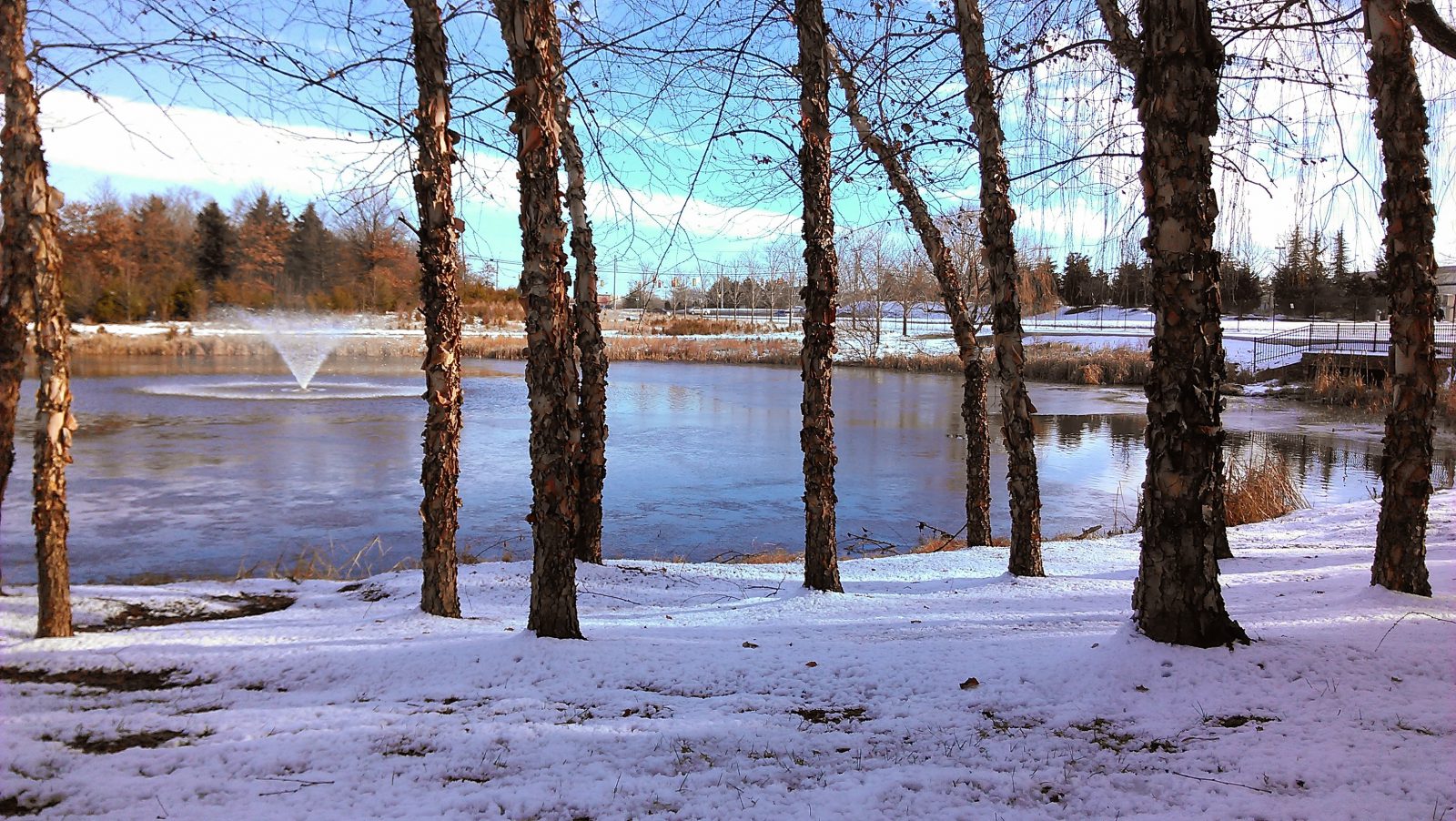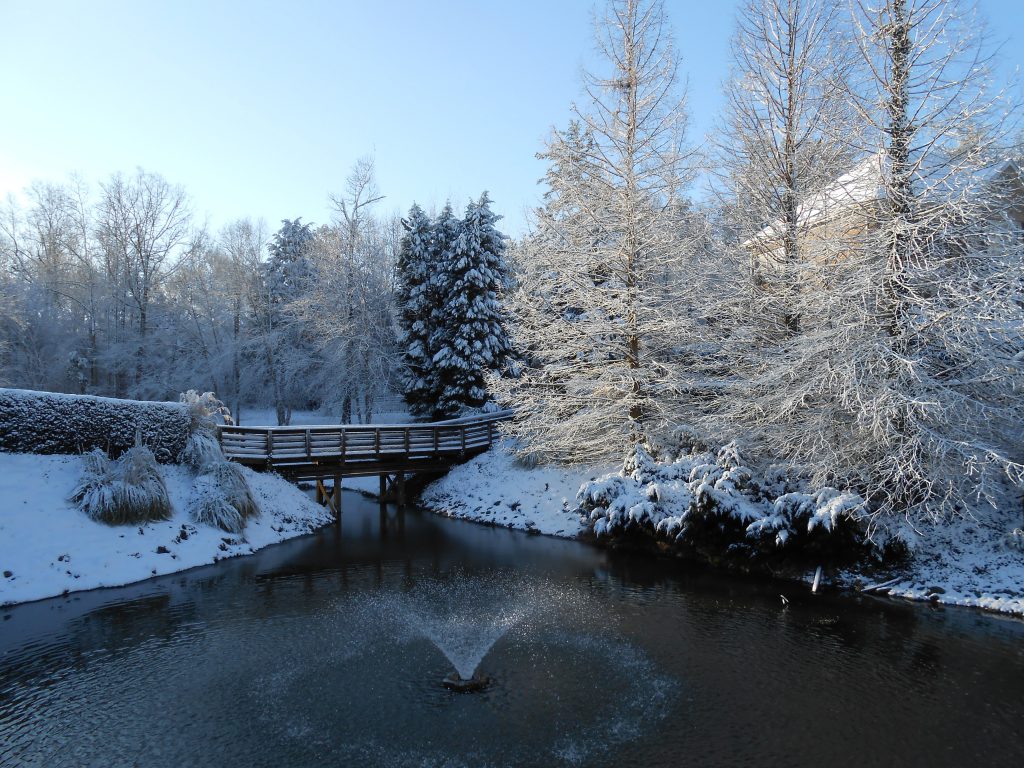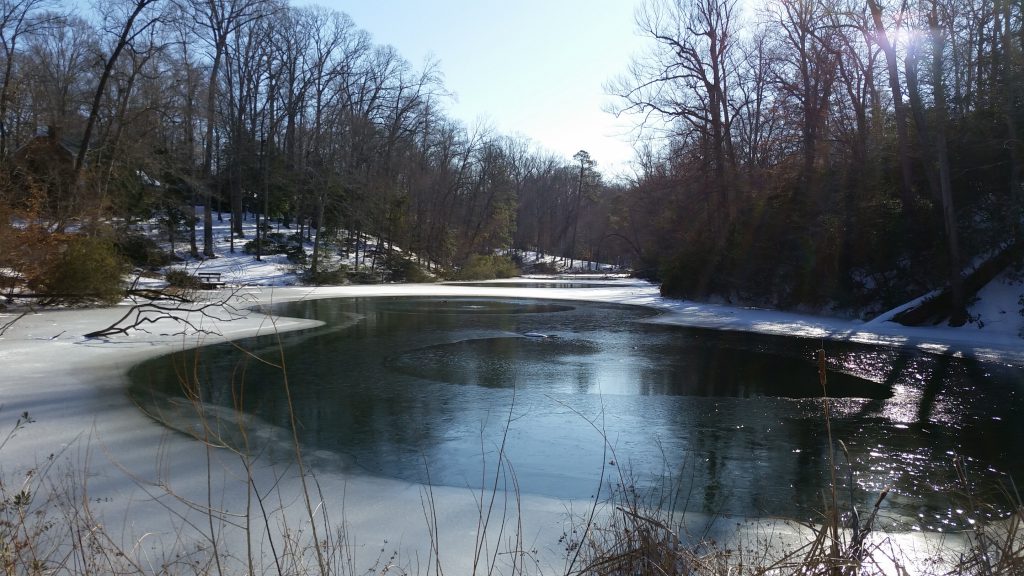
Aerating lakes and ponds as a management tool began as early as the 1950s and was initially used during the winter months to reduce the probability of a fish kill. Later in the 1960s, the idea of aerating your lake to control eutrophication effects and to improve water quality began to take hold. The concept of aeration is a fairly simple one. Aeration introduces compressed air through a diffuser at depth, and causes water to be welled up by a rising plume of air bubbles. Surface aeration is another method that typically uses an impeller, forcing air and water from the surface of your pond or lake upwards, landing on the surface waters, increasing the diffusion of oxygen into your pond or lake (fountain aeration). Aeration has become a widely used and accepted lake management tool to increase dissolved oxygen levels within a waterbody, but as an effective tool it must be utilized correctly during the summer AND winter months.

So why aerate during the winter? Well let’s take a closer look at what is really going on in your pond during these colder months and use our findings to understand the cause of a dreaded fish kill.
It begins with the fact that water is a very unique molecule with very distinct characteristics. As winter approaches and the days become shorter, the sun’s intensity decreases and less energy is available to heat your lake or pond. As your pond or lake cools, the colder, denser water will sink to the bottom until the entire waterbody reaches 4˚C (39˚F). At this temperature, water is at its most dense. Further cooling of the surface waters eventually causes the formation of ice and luckily for us, a temperature density anomaly occurs, and the ice floats.

Now that you have ice on your body of water, we have officially shutdown one of the avenues that allows oxygen to be introduced into your pond or lake. The diffusion of oxygen into a waterbody through air currents (wind) is one of the main pathways for oxygen to enter your pond or lake, and if your pond freezes, this pathway can be shut down for months. Another common oxygen limiting factor that can impact your pond or lake during the winter months is snow. As snow lands on your ice covered waterbody, solar penetration will be cut down to levels not suitable to support photosynthesis. What is a major product of the photosynthesis process by plants and pond algae? You guessed it, oxygen. You have now witnessed the shutdown of another effective pathway for oxygen introduction into your pond or lake.
Now that oxygen entering your pond has been drastically reduced, the remaining oxygen within your pond becomes very important and essentially becomes a finite necessity. Any ice fisherman will tell you that a lake is not asleep during the winter months. Although metabolic rates are low, these rates are not at zero and organisms will continue to consume oxygen through the process of respiration. Depending on the size of your pond or lake, the nutrient levels within your waterbody and the amount of time in which it is covered with ice, oxygen concentrations can decrease to levels inadequate to support fish and a devastating fish kill can occur.
The benefits of winter aeration are very clear. Aeration allows you to keep the ice open and add oxygen to your lake or pond. This added oxygen is especially important when the natural pathways have been reduced drastically during the winter months. Bottomed diffused aeration and surface fountain aeration are the most common and economical aeration options for your pond or lake. Both types of aeration immediately increase oxygen concentrations, in turn reducing the likelihood of a fish kill and noticeably changing the health of your pond or lake. Consider adding an aeration system to your lake or pond in the fall, and if you already have a floating fountain, consider adding submersed aeration underneath of the fountain for even better results. Aeration may be one of the best management tools for the winter months and I promise you, your fish will love it!
The Benefits of Aeration
SOLitude Lake Management is a nationwide environmental firm committed to providing sustainable solutions that improve water quality, enhance beauty, preserve natural resources and reduce our environmental footprint. SOLitude’s team of aquatic resource management professionals specializes in the development and execution of customized lake, stormwater pond, wetland and fisheries management programs that include water quality testing and restoration, nutrient remediation, algae and aquatic weed control, installation and maintenance of fountains and aeration systems, bathymetry, shoreline erosion restoration, mechanical harvesting and hydro-raking, lake vegetation studies, biological assessments, habitat evaluations, and invasive species management. Services and educational resources are available to clients nationwide, including homeowners associations, multi-family and apartment communities, golf courses, commercial developments, ranches, private landowners, reservoirs, recreational and public lakes, municipalities, drinking water authorities, parks, and state and federal agencies. SOLitude Lake Management is a proud member of the Rentokil Steritech family of companies in North America.









